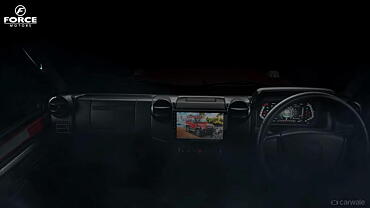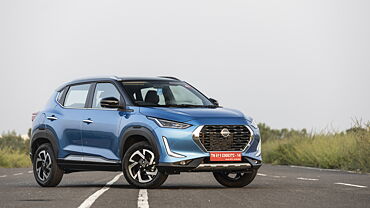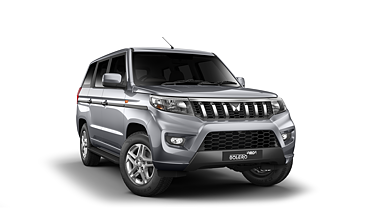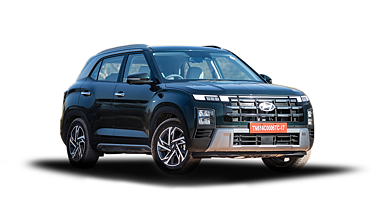Most of us have been in one, and have remarked on its comfort and stability. But very few of us would actually want to own one unless there were a large number of people to regularly ferry over moderate distances. Somewhat hampered by its taxi image, the Chevrolet Tavera has proved to be a steady seller for General Motors right from its introduction in India. Sourya Biswas reviews this workhorse from the GM stable.
"Hold it, hold it!" we can hear the cries. "What's with all this abbreviated gobbledygook?" you say? Well, before proceeding further let us tarry awhile on the aforementioned abbreviations.
MUV stands for Multi Utility Vehicle and broadly includes all vehicles that can be used for multiple purposes, such as office commutes, ferrying kids to soccer practice, trailer hauling, etc. MPV can be expanded to Multi Purpose Vehicle, and is the European equivalent of the North American MUV, although incorporating some car-like characteristics unlike the boxy MUV. SUV, quite a popular term nowadays, refers to Sports Utility Vehicle that is a class of passenger vehicle that combines the passenger-carrying capacity of a minivan with the towing or hauling capacity of a pickup truck, in addition to having some or considerable off-road capability. So how can the competitively priced Tavera combine the features of all three?
Perhaps we were a bit generous in our initial statement. The truth is that the Chevrolet Tavera, though imbibing certain design characteristics of a SUV and a MPV is essentially a MUV. At least that's how it's classed in India, even though internationally it is recognized as a "compact MPV". However, one thing is clear - SUV it is certainly not, and its 80 bhp motor, though sufficient for ferrying people around, isn't a shine on the 120 bhp-plus engines on the Mahindra Scorpio and Tata Safari. And it has practically no off-road capability.
However, the Chevrolet Tavera has been General Motors' masterstroke in India. In a nation of extended families and multiple relatives requiring frequent but relatively short trips, the Tavera with its diesel motor has been a godsend. And it deftly answers the average Indian car buyer's first and obvious question - "Mileage kitna deti hai?" Small wonder then that the Tavera has proved to be a hit with the premium and tourist taxi brigade, although it may need to upgrade its looks a little to justify its seven-lakh price for personal use. That is not to say that people don't buy it as the family car - you can see a number of Taveras on the roads, and quite a few ferry passengers without fares. Perhaps a modernization of its dated looks may make it a more suitable choice as the family vehicle.
As usual, General Motors has borrowed the success of one vehicle and replicated it in another, and across different markets. And they have named it differently in different nations, but of course. So the Chevrolet Tavera is basically an Isuzu Panther, a MPV originally sold in Indonesia and extremely popular there. In other markets it is known as the Isuzu AUV, HiLander or Crosswind. Unlike some other MUVs which are estate versions of existing sedans, the Tavera is based on an Isuzu pickup truck. This differentiates it from the Ford Fusions of the world, and contribute towards its van-like appearance and handling.
The Tavera has always been a competent vehicle, but it received a major boost when Toyota discontinued the Qualis to plug the Innova in India. Until then, for people looking at a MUV placed somewhat above the Tata Sumo, the Qualis had been the favourite choice. With its withdrawal and its replacement the Innova priced considerably higher, many potential Qualis-buyers gravitated towards the Tavera.
On first look, it is understandable why we mentioned the Tavera and SUV in the same breath. The aggressive rear and two-ton exterior lends it a no-nonsense aura not unlike the Tata Safari, which as we all know, is the longest-running SUV on Indian roads. The boxy shape of a MUV and the short, sloping bonnet typical of a MPV complete the picture. The look can be decribes as conservative, and the oblong headlamps and prominent grille with the Chevrolet bow-tie lend it a well-rounded businesslike appearance.
But you won't buy the Tavera for its looks. You will buy for the amazing value for money that it provides, and this is reflected in the Spartan but expansive interior. The Tavera has space, and lots of it. Both the front and rear-seat passengers can expext to be seated in reasonable comfort, although some cost-cutting is evident in the lack of lumbar and thigh support.
The dashboard is not pretty but functional, with square panels and mediocre quality of plastics. The roof lining is not moulded and the front seats are separated by a noticeable amount of empty space. However, certain useful touches like a tachometer, electronic trip meter and a side glass defroster do exist, and the AC with vents over all three row ensures adequate chilling.
Coming to the heart of the machine, it is powered by a 2.5L direct-injection turbo-diesel that puts forth a modest 80 horses and a sufficient torque of 186 N-m at 1800 rpm to haul the fully loaded vehicle. Performance is definitely not the engine's USP and the Tavera will be left eating the Safari's dust in no time on the highway. However, where the engine actually shines is in its frugality. The Tavera manages almost 11 kmpl and 15 kmpl on city roads and the highway respectively, and this has definitely contributed towards the Tavera's popularity.
The suspension is a little stiff as independent struts are beyond its budget. So the tried-and-tested layout of torsion bar in front and leaf springs at the rear. However, the ride quality is improved by the low centre of gravity and the stiff chassis. The steering wheel provides adequate feedback and enables effortless cruising on highways with confidence. The 15-inch tyres provide adequate grip and the brakes have sufficient stooping-power, though somewhat hampered by the absence of ABS.
One thing that the Chevrolet Tavera offers in plenty is variety. From low-end NY variants not even equipped with air conditioners to top-end Neo models with power windows and AC, the Tavera is available in a mind-boggling eleven variants in India. This includes different seating configurations from seven to ten passengers, and the prices envelope a wide range spanning 4 lakhs, from Rs.6.36 s for the low-end NY B1 to .9.83 s for the top-end Neo SS-D1. The Tavera may not be a scorcher in the performer or looks departments, but when it comes to practicality as a people mover, it is without peer. And it has a long success story in south Asian markets to fall back on.
In India, the Tavera competes with the Tata Sumo. With the latter going for a major facelift with the newly-launched Sumo Grande, and the Tavera's image downgraded somewhat as a tourist taxi, General Motors have their task cut out for them. Although it currently offers a more comfortable ride than the Sumo, all this is about to change. And the new Sumo may even get the excellent 2.2L VTT DICOR engine. The Tavera is desperately in need of an overhaul of its staid looks, and the introduction of a common-rail engine for improved performance won't hurt its case either.



























